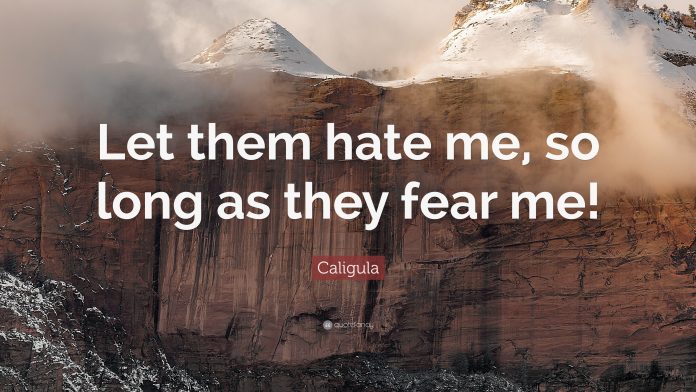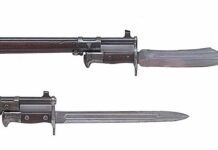
CBS News has noticed the positive momentum the 2nd Amendment has in the wake of Bruen, and they low-key hate and fear the freedom ringing.
Washington — Less than a year after the Supreme Court issued its major decision expanding gun rights, the new legal test laid out by Justice Clarence Thomas in his majority opinion has reshaped the legal landscape for firearms laws and led to uncertainty over whether measures that aim to curb gun violence can survive legal scrutiny.
Because most of them can’t.
Plain and simple, the majority of gun laws on the books don’t actually do anything other than interfere with the natural right of a person to arm themselves in their own defense and allow politicians to pat themselves on the back and collect campaign dollars for ‘doing something’ against gun violence unlike their [opponent of the moment] who loves murder.
That’s the narrative. That’s the formula on repeat, over, and over, and over again. Vote for me, I’ll solve it. The other moron will make it worse, and probably likes it because they’re [implied racisms and bigotries] and [shill for the tiny amount of political dollars coming from the firearm lobbies].
It’s more predictable than a script on the CW and only a fraction as entertaining.
The laws — those recently enacted in the states, as well as longstanding federal restrictions with broad support — are being tested in courtrooms from coast to coast, where judges are tasked with evaluating whether they are “consistent with the nation’s historical tradition of firearm regulation.”
They love pulling that historical tradition line out of Thomas‘ directions and ignoring the rest. We know that for a long time now the 2nd Amendment infringements in states like California, Hawaii, New York, and Illinois have only held out of a combination of political loyalty and an unwillingness to upset an equilibrium. Regional courts would generally sustain regional firearm laws, unless they were so egregious it was entirely indefensible, because if it got appealed above them it was no longer their problem. A circuit court doesn’t care if they issue a ruling, it goes to SCOTUS, and then SCOTUS changes it. They did their jobs. So for the divisive topic of guns, letting local rules stand and be defended by their state AGs was just passing the case down the line until one side or the other got tired or SCOTUS decided. Circuit court justices would never have to account for an anti-2A decision because they didn’t make the law and they weren’t the final decision on the law, they were just a stop on the way to that decision.
All that to say what I said above, the middle courts had very little to lose in siding with states on gun laws in most cases and they wouldn’t be the one to upset state AGs and legislatures and come under fire for it.
But that has changed and it started before Bruen, Bruen perhaps is its penultimate expression.
“We’re seeing a lot of action and a lot of unpredictability when it comes to the Second Amendment after Bruen,” said Joseph Blocher, co-director of Duke University’s Center for Firearms Law. “It’s happening in a bunch of different directions, and the source of the change is the new methodology that the Supreme Court announced in the Bruen case because it instructs courts to evaluate the constitutionality of laws based solely on whether they are in some ill-defined sense consistent with historical tradition.”
You see though, that’s where people like Blocher trip up. There isn’t anything ill-defined about the tradition of arms in this country, what shifted is who were considered ‘the people’ who could bare them and most early gun control efforts were in prevention of letting ‘those people‘ bear arms.
“We hold that when the Second Amendment’s plain text covers an individual’s conduct, the Constitution presumptively protects that conduct,” Thomas wrote. “To justify its regulation, the government may not simply posit that the regulation promotes an important interest. Rather, the government must demonstrate that the regulation is consistent with this Nation’s historical tradition of firearm regulation. “
In plain English, laws that merely exist as feel good measures and sounds good on paper restrictions can no longer simply be sustained by arguing a ‘state interest’ or ‘general public welfare’ line to a court, even as piles of evidence show these laws hurt far more than they can be shown to help, are inconsistently if ever actually applied, and are ignored by courts and convicts alike for various reasons and offenses until the crime gets egregious enough it can no longer be.
The recent decisions looking to restore marijuana users firearm rights and not violate the rights of someone accused, but not convicted, of domestic violence and issued a protective order against are examples. That second decision caused outcry, and was inflamed by eager politicians looking for gains after a mediocre midterm, but when looked at logically applies to almost nobody.
Nobody?
Nobody.
Misdemeanor DV convicts (can I still use that word for a person convicted of a crime in a court?) are prohibited people. All felons are prohibited people. What do we suppose the percentage of POs issued is against people with otherwise non-prohibitive records? What do we suppose the follow through rate by LE checking their properties are and successfully removing all weapons? How much do we suppose their ability to acquire a weapon, not legally just acquire, is impacted? How much do we suppose that, even without legal access to firearms, the ability of the person under to the PO to actually cause harm is impacted?
It isn’t? A Protection Order is just a piece of paper that makes it extra illegal to do already illegal things to someone? Neat.
So when it extra doesn’t work it is… extra bad, I guess. The violent person did the bad thing they were extra not supposed to do to one person or persons in particular and they did that. We can put them in extra jail now, sorry about your severe injury and/or death though. We wrote it down that they shouldn’t do that or go near you. Tough luck.
So back to the original question. How many POs are issued against people who are otherwise totally fine to own a firearm? That would be a number to know actually, and not merely a situation to speculate on hyperbolically. What evidence do we have to suggest that making those specific individuals give up their personal weapons is effective? How is that different and more effective than saying stay away and do not contact [individual or group]. How is it being monitored during the PO that they do not acquire a firearm or other means to harm the protectee(s) of the order?
All of these questions, which will not have satisfactory or possibly even known answers, are to generate the asking of the real question.
If this person is such a risk to this other person, and we know that, why are they free to act as they choose but with a list of no-no’s on a napkin? Any violent action they take against the person under the order was and still is illegal. Additionally, due to the order, proximity or contact outside any parameters stated in the order are arrestable acts too. What does going through the effort of confiscating ‘known’ weapons actually accomplish for the meaningful safety of the protectee when the alleged potential aggressor has nearly limitless options to cause harm if they are going to.
If they are this much of a risk. Lock. Them. Up.
“But that would violate…” Yes it would, but you apparently have enough evidence to suggest that the continued possession of a firearm is too much of a risk to the protectee to allow so lets mitigate all those risks and after evidence is presented the person goes into a custody status. Could be house arrest, not prison, but if they are that objectively great of a risk they should not be free to act. If you don’t have that evidence we cannot act against someone in so half baked a way, it is a violation of several of their civil rights when it comes to criminal proceedings and their own defense. Period. End of debate. We either trust them enough to abide by the order of their own volition or we do not based upon evidence and they should be in some manner of custody because of that.
The Next Laws to Fall?
If the fear being projected out of the California is any indication, the belief there is that both the magazine and assault weapon bans are going to be given their just rewards as unconstitutional. All thanks be unto Judge Benítez, the pearly clutching is actually satisfying to watch now since they long ago abandoned reason.
Weapon prohibitions, especially partial ones so convoluted as to be made easily circumventable, are just political drivel anyway. They are written, passed, and pushed only to advance the political image of the politicians who write and support them. They do not increase safety. They are, at best, a thought and a prayer that a bad thing will not happen after the rule gets passed. Which, if you follow the logic chain, is as effective as just hoping a bad thing doesn’t happen.



